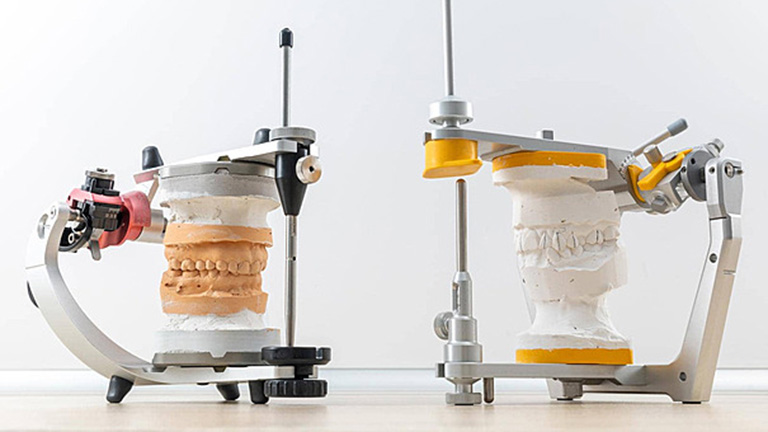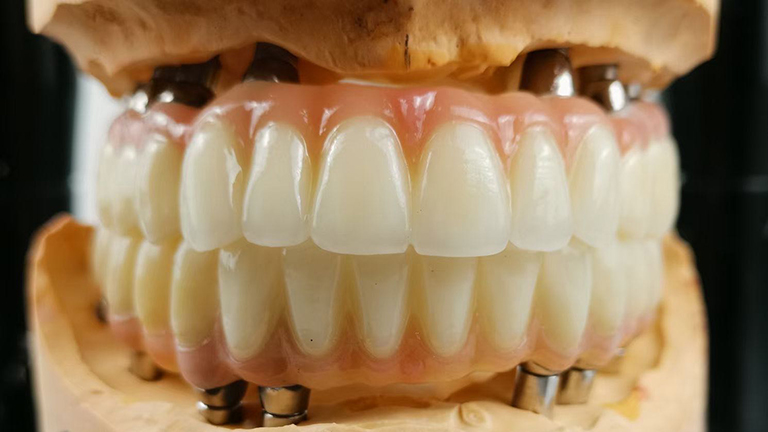Dental labs must reassess the value they provide to dental practices to leverage the dental laboratory opportunity.
The dental industry is in the midst of widespread digital transformation. As a result, dental laboratory professionals must navigate a rapidly evolving landscape to remain competitive and provide the best possible care to patients.
In this blog post, we’ll explore some of the biggest challenges and opportunities facing the dental laboratory industry in the future of work.
Challenges
One of the biggest challenges facing dental laboratory professionals is the increasing demand for faster turnaround times and more complex cases. Advances in CAD/CAM technology and 3D printing have revolutionized the fabrication process, but they’ve also created higher expectations from patients and dentists.
To remain competitive, dental laboratory professionals need to invest in the latest technologies and stay up-to-date with the latest techniques. This requires ongoing education and training, which can be difficult to manage alongside a busy workload.
Contemporary dental labs need to reach beyond simple product delivery. The dental lab must become a trusted partner that guides dental practices through the complex matrix of new technologies and market disruptors.
A second common challenge faced by dental laboratories is the need for dentists to provide the best possible outcomes for their patients. Their relationship with their dental lab needs to support this — from helping to improve digital workflows and efficiencies to providing expert advice.
When a dental practice has a partnership with a dental lab that adds real value to their business, they’ll be more likely to baulk at the hefty capital expenditure investment required to set up in-house manufacturing, or may second guess the risk of sending their dental laboratory work to a less technically capable cheaper alternative.
Opportunities
Despite the challenges, there are also many exciting opportunities for dental laboratory professionals in the future of work. With the increasing adoption of intraoral scanners, dental labs can receive digital impressions from dentists and eliminate the need for physical moulds. This speeds up the workflow, reduces errors, and allows for immediate communication between the dentist and the lab. Dental labs and dentists can communicate in real time through digital platforms, and dentists can provide feedback, approve designs, and make adjustments more efficiently.
For example, advances in digital dentistry are creating new possibilities for customization and precision, which can improve the patient experience and outcomes.
Digital workflows also offer greater efficiency and cost savings, as well as the ability to collaborate with dentists in real-time. This means dental laboratory professionals can work closely with dentists to create better prosthetics and restorations, leading to better outcomes for patients.
Another opportunity for dental laboratory professionals is the growing demand for cosmetic dentistry. As more people seek out cosmetic procedures, there’s a need for skilled professionals who can create natural-looking restorations and prosthetics.
What digital solutions and technologies are used in dental laboratories?
Dental labs can benefit from a wide range of digital solutions and technologies to significantly improve the efficiency, accuracy, and quality of work in dental labs while enhancing collaboration with dentists and providing better patient care.
1.CAD/CAM software: Computer-Aided Design (CAD) software enables dental lab technicians to create precise 3D models of dental restorations, such as crowns, bridges, and dentures, based on digital impressions. Computer-Aided Manufacturing (CAM) systems take CAD designs and use CNC milling machines or 3D printers to produce dental restorations with high precision.
2.3D printing: Dental labs can use 3D printers to create a wide range of dental products – including crowns, bridges, models, and surgical guides – using a variety of materials, such as ceramics, resins, and metal alloys. 3D printing seamlessly integrates with digital impression systems, CAD/CAM software, and other digital dental technologies, which enables a fully digital workflow. That can help dental labs produce and deliver restorations faster and more efficiently.
3.Digital shade matching: Digital tools and software help in accurately matching the shade of restorations to natural teeth for better aesthetics. Specialised digital devices, such as spectrophotometers, are used to measure and analyse colour data from intraoral scans. These devices can provide numerical values representing the colour and shade of the tooth. Software algorithms are then used to process the colour data and match it to a database of known tooth shades.
4.Dental Laboratory Information Systems (LIS): LIS software helps streamline lab operations, including case tracking, billing, and reporting. Digital workflow management software also assists in tracking and managing cases, from receiving digital impressions to scheduling production and ensuring timely delivery.
5.Cloud-based platforms and AI: Secure cloud storage and collaboration platforms enable dental labs to store digital records, share files with clients, and collaborate with dentists in real-time. Virtual lab platforms can be used to remotely consult with dentists, collaborate on treatment plans, and share digital records in real time. And artificial intelligence (AI) and machine learning algorithms can assist in tasks like automating the analysis of radiographs, improving treatment planning, and aiding in prosthetic design.
What are the digital workflow requirements for dental laboratory technicians?
Specific digital tools
Learning to use CAD software is a crucial step for many dental laboratory jobs. Technicians must become proficient in creating 3D models of dental restorations, making design adjustments, and exporting files for production. If the lab uses CAM software for milling or 3D printing, technicians should receive training on how to set up and operate these systems.
If 3D printing is part of the workflow, technicians need training on the specific 3D printers and materials being used.
Training may also be required to use spectrophotometers for digital shade matching. Technicians should learn how to measure and analyse tooth colour accurately.
Understanding digital workflows
Dental lab technicians must grasp the entire digital workflow process, from receiving digital impressions to finalising restorations. This includes understanding how to integrate digital scans, design, and manufacturing processes seamlessly.
Dental labs often need to manage digital files, patient records, and case tracking systems. Training may include the use of dental laboratory management software to organise and streamline the workflow.
Quality control and validation
Training should encompass quality control procedures to ensure the accuracy and precision of digital restorations. Technicians need to learn how to validate the fit, colour, and overall quality of the final products. Labs must follow strict, best-practice quality control procedures – overseen by experienced senior technicians – to ensure the accuracy and consistent quality of all restorations they produce.
Troubleshooting and Solutions
Technicians should develop problem-solving skills for addressing issues that may arise during the digital workflow, such as software glitches, equipment malfunctions, or quality discrepancies.
Digital transformation in dental labs is closely aligned with the evolving trends and advancements in the dental industry. It empowers dental professionals to provide more precise, efficient, patient-centric, and data-driven care.
Want to learn more about digital dentistry and the opportunity for dental labs? Read The Ultimate Guide to Digital Dentistry: A practical guide to going digital
Topway Dental Lab is a full-service dental laboratory. To find out more about working with us, please email
[email protected] or phone +8618607194986




